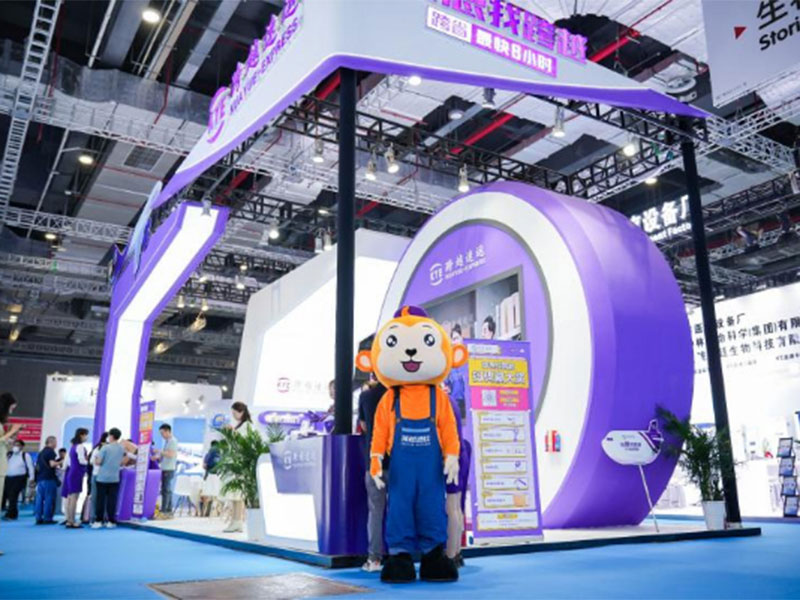Observation sur l'industrie pharmaceutique et de la santé : La substitution domestique des séquenceurs s'accélère ; les applications médicales de l'IA+ s'approfondissent.
Recent trends in the pharmaceutical and health industry focus on the dual impact of policy-driven and technological breakthroughs. The implementation of the Ministry of Commerce's export ban on gene sequencers from the US company Illumina has accelerated the process of independent substitution in the domestic sequencer industry chain; at the same time, the application of AI in the medical field continues to deepen, from auxiliary diagnosis to precision treatment, and the technology landing scenarios are constantly expanding. The innovative drug sector has become the focus of market attention with policy support and international progress.
The localization of gene sequencers has accelerated, and the integration of the industrial chain has accelerated
The Ministry of Commerce's export ban on Illumina marks a profound adjustment in the domestic gene sequencer market structure. As the core equipment for life science research and biomedical research and development, the demand for domestic substitution of gene sequencers is imminent. Through technical research and industrial chain collaboration, domestic companies have made breakthroughs in the research and development of key components of sequencers, reagent matching and data analysis. For example, domestic sequencers have gradually narrowed the gap with imported products in multi-omics data processing efficiency, and clinical application cases have increased significantly.
Policy support further promotes the large-scale application of domestic sequencers. The policy orientation of localization of medical devices is clear, the hospital procurement catalog is inclined towards local products, and the coverage of innovative technologies by medical insurance payment provides continuous momentum for the commercialization of domestic equipment. In addition, domestic companies are accelerating their overseas market layout, gradually opening up the global market space by establishing overseas production bases and participating in the formulation of international standards. In the future, companies with technology iteration capabilities and channel advantages are expected to further expand their market share.
AI+medical care is moving towards the deep water zone, and scenario-based implementation is the key
The integration of AI and medical care is shifting from technical exploration to large-scale application. In the fields of medical imaging, pathological diagnosis, chronic disease management, etc., the deployment of AI-assisted systems has significantly improved the efficiency of diagnosis and treatment. For example, in the field of ophthalmology, the automation and precision of fundus screening have been achieved through the local deployment of large models; third-party medical testing institutions use AI to optimize the detection process and reduce manual errors. At the policy level, many places have piloted the inclusion of AI diagnostic services in the scope of medical insurance payment to accelerate technology penetration.
The core challenge of technology implementation lies in the balance between clinical value and business model. At present, AI medical companies focus on "quantifiable and replicable" scenarios, such as early tumor screening and drug development assistance, to shorten the R&D cycle and reduce costs. Technology giants such as Huawei have entered the medical AI market, promoting the open sharing of computing power and algorithm resources and accelerating the construction of the industry ecosystem. In the future, AI medical solutions with clear clinical value and the ability to quickly realize revenue conversion will become the focus of capital and market attention.
The internationalization of innovative drugs is accelerating, and differentiated competition is highlighted
The active market of the innovative drug sector stems from the dual breakthroughs of policies and industries. Domestic pharmaceutical companies have formed differentiated advantages in the fields of autoimmunity, metabolism and other chronic diseases through licensing cooperation (BD) and independent research and development in parallel. For example, the research and development progress of clinical cure drugs for hepatitis B not only fills the domestic gap, but also opens up overseas markets through international cooperation. On the policy side, the "Class C Catalog" pilot and commercial insurance payment innovation provide payment guarantees for high-value innovative drugs, driving R&D investment to the direction of clear clinical needs.
Internationalization has become the core strategy of innovative pharmaceutical companies. With the optimization of FDA approval channels and the accumulation of overseas clinical data, the access efficiency of domestic innovative drugs in the European and American markets has improved. At the same time, pharmaceutical companies accelerate their global layout by establishing overseas R&D centers and jointly developing with multinational pharmaceutical companies. In the future, companies with original target discovery capabilities and efficient clinical execution capabilities will occupy a more advantageous position in the global competition for innovative drugs.
(Note: The content of this article is based on public information and does not constitute investment advice.)


